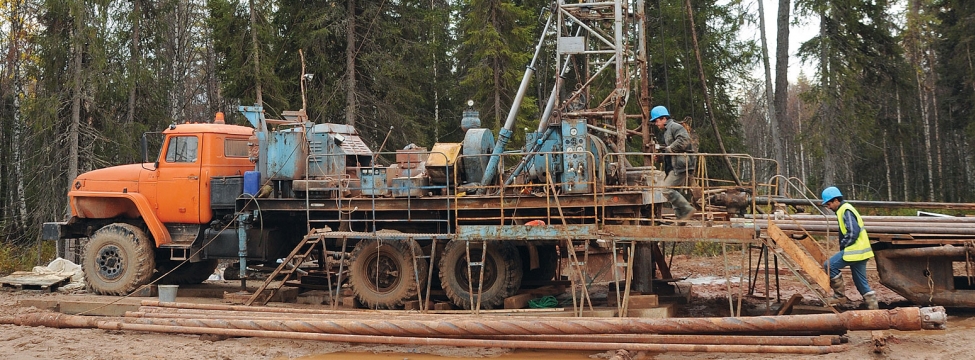SRK works with clients to develop effective strategies for managing surface and groundwater in open pit mines.
SRK recently completed a bankable level feasibility study for the Grib Diamond Mine in Northern Russia where many of the issues associated with controlling water in the open pit environment can occur.
The results of SRK’s site investigation and numerical modelling of mine dewatering indicated that more than one depressurisation method would be required to optimise the pit slopes. The final design included a ring of vertical dewatering wells around the circumference of the pit to dewater the more permeable shallow formations, and several layers of sub-horizontal drain holes in the lower half of the pit to depressurise the less permeable strata. This design resulted in steeper, more stable slopes.
Given the environmental sensitivity of the nearby salmonid-bearing rivers, the project faced two significant water treatment and disposal challenges: the high incidence of suspended sediments in pit seepages with very poor settlement properties, and the elevated salinity of groundwater drawn from the deeper formations by the dewatering system.
SRK addressed the issue of suspended solids in water by using “Silt-buster” technology.
To solve the potential salinity problem during the final phases of mine life, SRK proposed two principal options:
Option 1. If only a small volume of brackish water is encountered in deeper formations, then the effluent from dewatering could either be disposed of directly to a nearby karst lake, or back in to the abstracted aquifer at a suitable distance from the dewatering operation.
Option 2. If the volume of brackish water is large, then it should be treated using reverse osmosis (RO) and the waste brine pumped to the karst lake.
There is a high cost associated with the installation and operation of an RO plant, so SRK introduced appropriate modifications to the dewatering design for Option 2 to delay its introduction. This for example included the use of bridge plugs to temporarily close off the lower sections of each dewatering well until such time that dewatering of the deeper formations was required.
In SRK’s experience, the development of an effective mine water management strategy for open pit mines depends critically on close collaboration between the water, geotechnical and mining teams.

